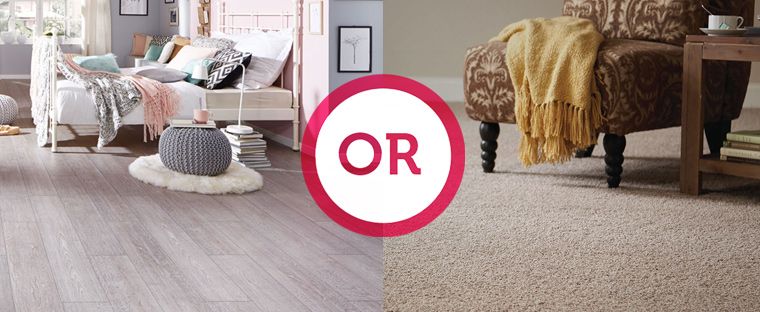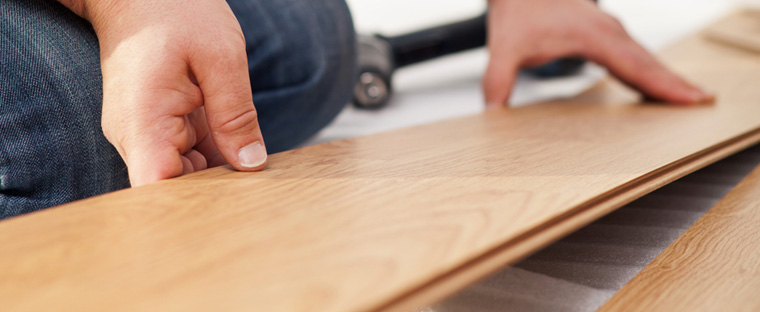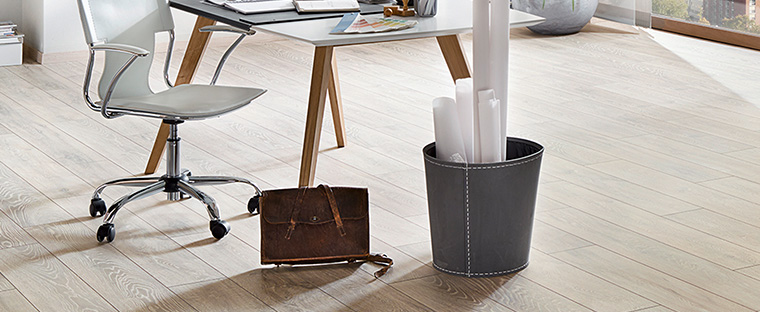
Choosing between laminate and carpet flooring
Laminate flooring’s popularity is growing fast in NZ, although it’s still got a way to go to catch carpet flooring.
When you’re deciding between engineered wood, laminate and carpet for your flooring, you’ll likely find that laminate and carpet flooring are the two least expensive choices. They’re also the most straightforward to install.
Laminate flooring is considered more hygienic and hypoallergenic than carpet, as it is easy to clean, and dirt won’t go unnoticed.
Carpet tends to retain dust and pollen, stain more easily, and build up mould and mildew when exposed to moisture, making it a less desirable option for those who struggle with allergies.
The two flooring types are similarly priced, but high-end “high pile” carpeting will likely cost much more than high-end laminate flooring. Installation costs must also be considered, with the click-lock planks found with laminate flooring making installation relatively easy and popular with the do-it-yourself (DIY) crowd. Carpet is generally installed by a professional carpet layer, thereby increasing costs even further.
Carpet, which is made from wool or a synthetic fibre, such as polypropylene, nylon, or polyester, is attached to a backing that is nailed or stapled to the floor and any padding underneath. Laminate flooring is a multi-layered synthetic product made from wood fiberboard materials and melamine resin. One layer of laminate flooring is dedicated to a photographic appliqué that imitates wood and sometimes stone.
Appearance and Composition
Laminate flooring is usually made from high-density fiberboard or wood particles. There are typically four layers in a laminate flooring plank, including a stabilising layer, a layer of treated high-density fiberboard, a photographic pattern layer, and a clear melamine resin layer. The clear, hard layer is placed on top of the other layers to boost durability.
Carpets come in many different styles, including woven, needlefelt, knotted and tufted. All styles have an upper layer of pile – the frilly, soft yarns that stand up on the flooring — attached to a backing.
Modern carpets often provide ultra-soft fibres and stain resistance, by way of technology that tightly combines synthetic molecules close together, making fibres smaller in diameter.
While most carpeting is made from petroleum-based synthetic materials, natural wool is the softest and most durable option. It is, however, also the most costly. As such, nylon, which is the more durable of the synthetic carpet materials, is the most commonly used material in the construction of carpets.
Both carpet flooring and laminate provide users with a wide range of design options. Laminate tends to come in trendy designs mimicking natural flooring options, such as wood and stone, while the range of colours, patterns, and piles of carpet available are almost limitless.
Carpet is the warmer option, often used in bedrooms where one is likely to be barefoot. It is also an acoustic insulator, cushioning noise caused by movement. However, there are special underlays available in the market for use with laminate that act as insulation, reducing heat loss by up to 30%.
Laminate flooring does not absorb sound quite as well as carpet, so is noisier to walk on. High-tech acoustic underlays are used with laminate to help reduce noise, and these are quite effective.
Laminate flooring tends to provide a more versatile base for interior decorating due to its resemblance to natural wood. One generally won’t have to worry about clashing colours; a consideration carpeting may necessitate. Bright or decorative carpets may suit one’s style now, but might be difficult to incorporate into new décor choices in the future.
Suitability
Many homes use a combination of carpet flooring and hardwood or laminate flooring. Carpets are not a good choice for kitchens and dining rooms, for example; laminate will work better in those situations. Bedrooms tend to use carpet more often for their warmth and softness.
Laminate works better if you are a landlord and need durable flooring options for your rental property because carpet tends to show more wear and stains from mud and liquid spills.
Health Concerns
Laminate flooring tends to be easier to clean than carpet flooring and is thus considered more hygienic and hypoallergenic. Especially since the top producers in the world like Krono Original offer an antibacterial coating on their laminate floors.
A study of carpets showed high levels of dangerous bacteria, hidden dirt, pollen and dust mites, suggesting consumers are unable or unwilling to clean their carpets properly.
It is common knowledge that old carpet can aggravate allergy symptoms, as the fibres catch and hold dirt, allergens, pesticides, and toxic chemicals. In an attempt to address allergen concerns, today many carpets are made with more earth-friendly chemicals and fewer chemicals altogether, so low-VOC (volatile organic compound) products are available for sensitive consumers.
Flooring Installation
Carpet can be installed over many materials, from concrete to wood, and can hide slight irregularities in a floor. Carpet and underlay are first trimmed to the correct dimensions, and then the two layers are installed with nails or staples, and seams are glued down. Installation in a large room requires stretching of the carpet and special tools. Although users can install carpet themselves, particularly with some “peel and stick” brands making DIY jobs easier, carpet usually requires professional installation.
Laminate flooring can be installed on top of almost any existing floor, but if the special preparation of the floor is required, users may need professional services. Click-lock laminate flooring products make DIY installation easier, and also lower the costs of professional installation due to the speed and ease with which the planks can be installed.
Durability
Carpet usually lasts 5-8 years (average quality); 10-12 years for top quality carpet.
Good quality laminate flooring is less prone to some of the issues that plague hardwood. Most laminate floors will need to be replaced after 20-30 years. Lower quality brands will need to be replaced sooner.
More expensive laminate flooring is often a better investment, though some carpet provides a cheaper option should users wish to renovate more frequently. Modern carpeting is more durable and stain-resistant than in the past, but it’s accepted that it won’t last more than 10 years in any areas with
Maintenance and Replacement
Spills on carpet should be cleaned immediately to prevent stains and mould. Mats placed at entries and exits help to keep dirt off carpets. To guarantee cleanliness, carpets should be vacuumed twice a week in low-traffic areas and more often in high-traffic areas. They benefit from a deep-cleaning hot water extraction cleaning every 12-18 months. Leaving pools of water will damage laminate flooring and carpet, both of which may then require replacement.
Unlike hardwood and some better engineered hardwood, laminate floors cannot be sanded and refinished. Also, laminate may warp in high-moisture areas, such as bathrooms, particularly if the installation is not done correctly. Users should place protective pads on the bottoms of chair and table legs to prevent scratching. Manufacturers suggest lightly-damp mopping (not wet mopping!) laminate floors clean using laminate cleaning solution.
When carpet is damaged, you will need to replace the entire area of carpet. Laminate flooring by comparison offers the advantage that small sections can be replaced, as needed, to repair damages.
Cost
The range of costs for both products depends on the country of origin, quality and style selected.
With carpet, a higher, plusher pile tends to equal greater expense, and wool is the most expensive fibre used in the flooring. When it comes to laminate, homeowners should be careful with cheaper brands, as they may not be as durable. The most expensive laminate is ‘AC5 Heavy Duty Commercial Rated’ as this is the most durable laminate available.
When comparing prices for laminate and carpet, be sure to factor in the warranty period. Laminate floors can be significantly cheaper if they are not very high quality and only offer a 10-year warranty. Higher-end laminate will provide a better warranty (20 to 30 years) and will stay looking better for significantly longer than carpet.
Resale Value
If you ask real estate agents most of them will tell you that a hardwood floor adds better value than carpet flooring. Laminate flooring can give the highly sought-after hardwood look for much less. Though buyers will know it’s not hardwood, a laminate can make a home look more modern and open, adding a more sophisticated atmosphere to the home.
Environmental Considerations
Laminate flooring can be recycled, with some manufacturers able to reuse up to 80% of materials.
The pile of carpeting is made from nonrenewable materials, and small amounts of unhealthy VOCs can be released from installed carpets due to the chemicals used in manufacturing. VOCs can be released for up to 5 years, though this chemical release, known as off-gassing, lessens with time.
For this reason, homeowners are recommended to keep rooms with new carpet installations well-ventilated for at least 72 hours, post-installation. Vacuuming new carpet flooring with a HEPA filter vac and using hot water extraction cleaners can help remove VOCs. Though there are more green carpeting options available that use renewable materials and avoid dangerous chemicals, these options come at a higher cost.
Are you keen on considering European-made laminate flooring from Laminate Direct?

